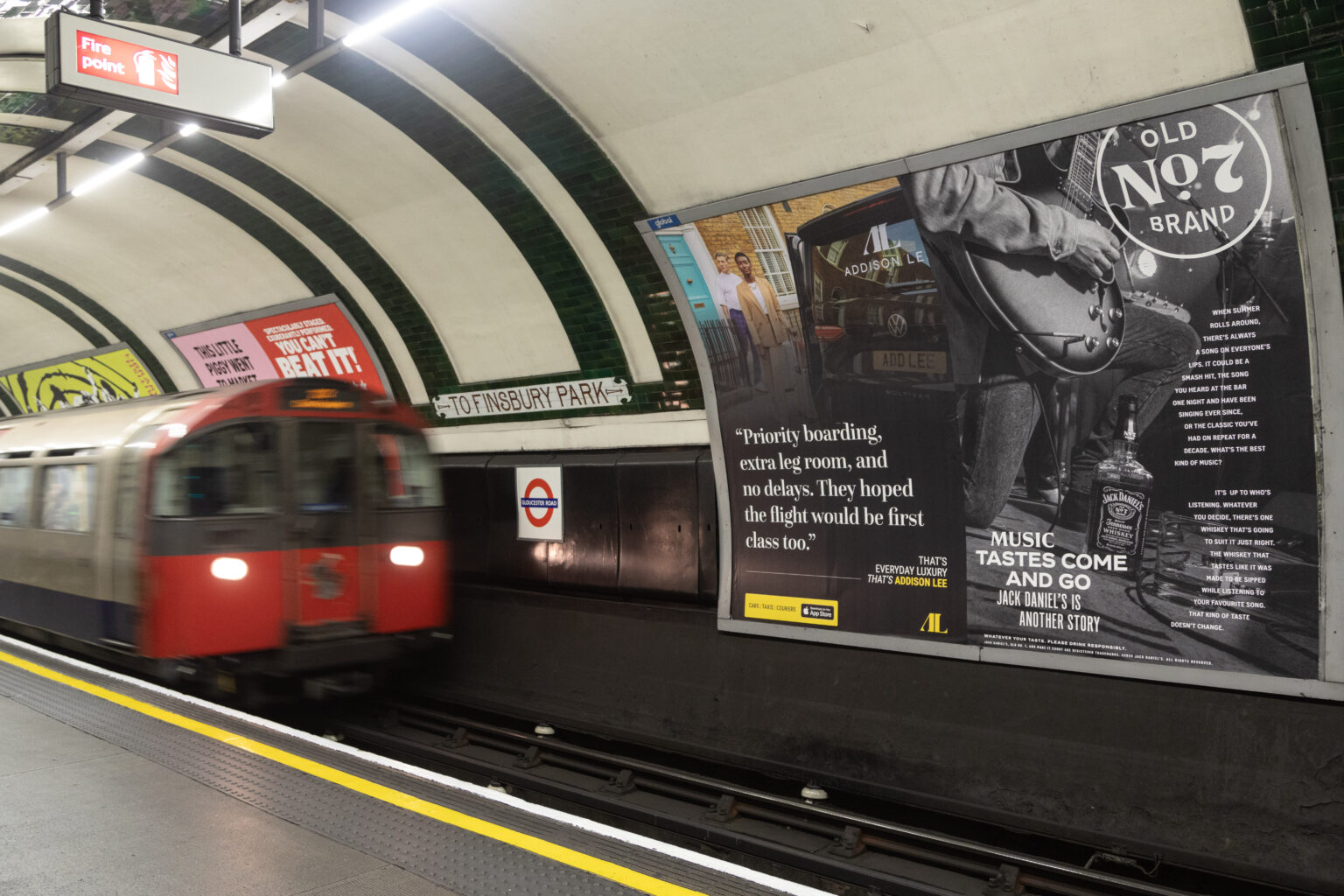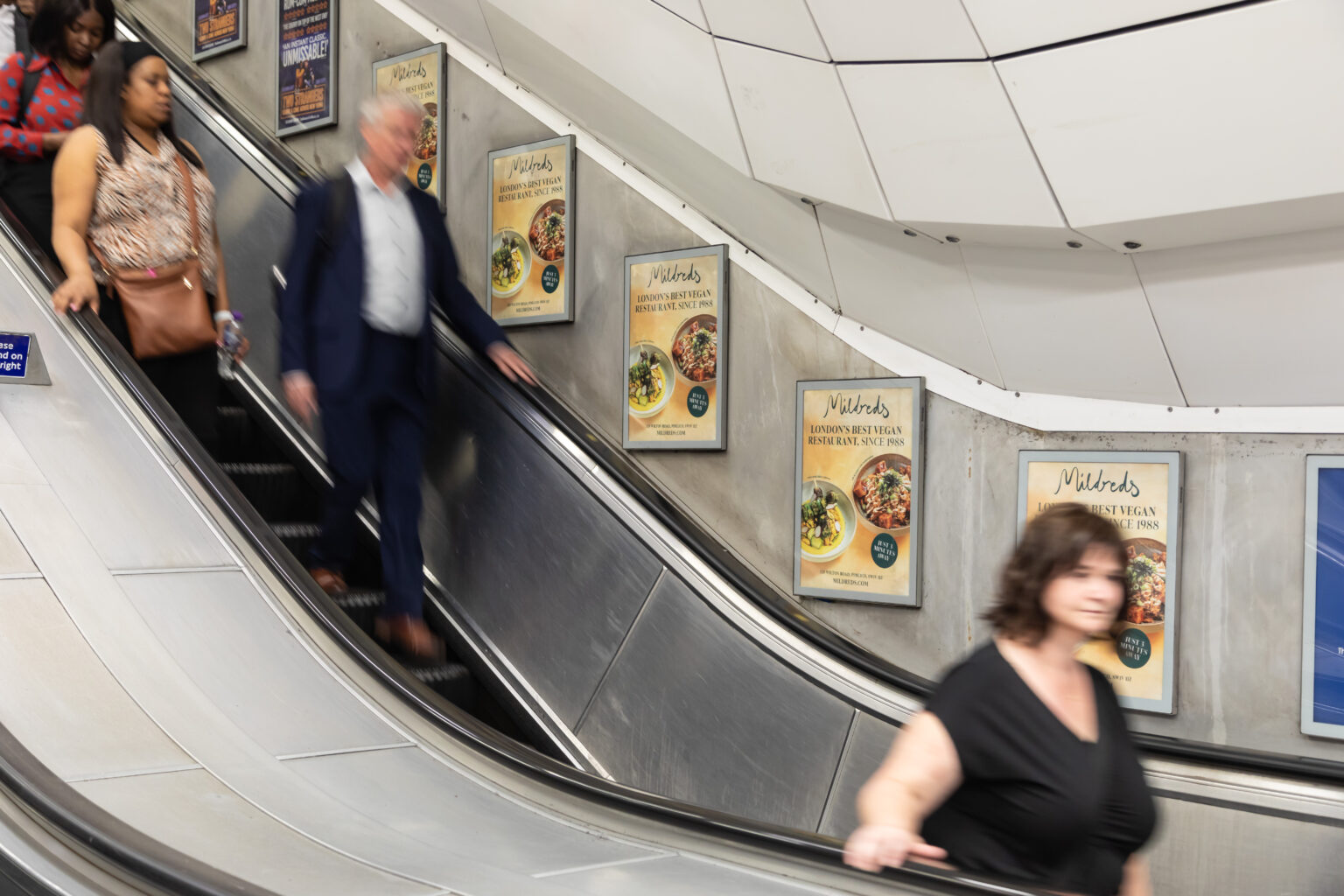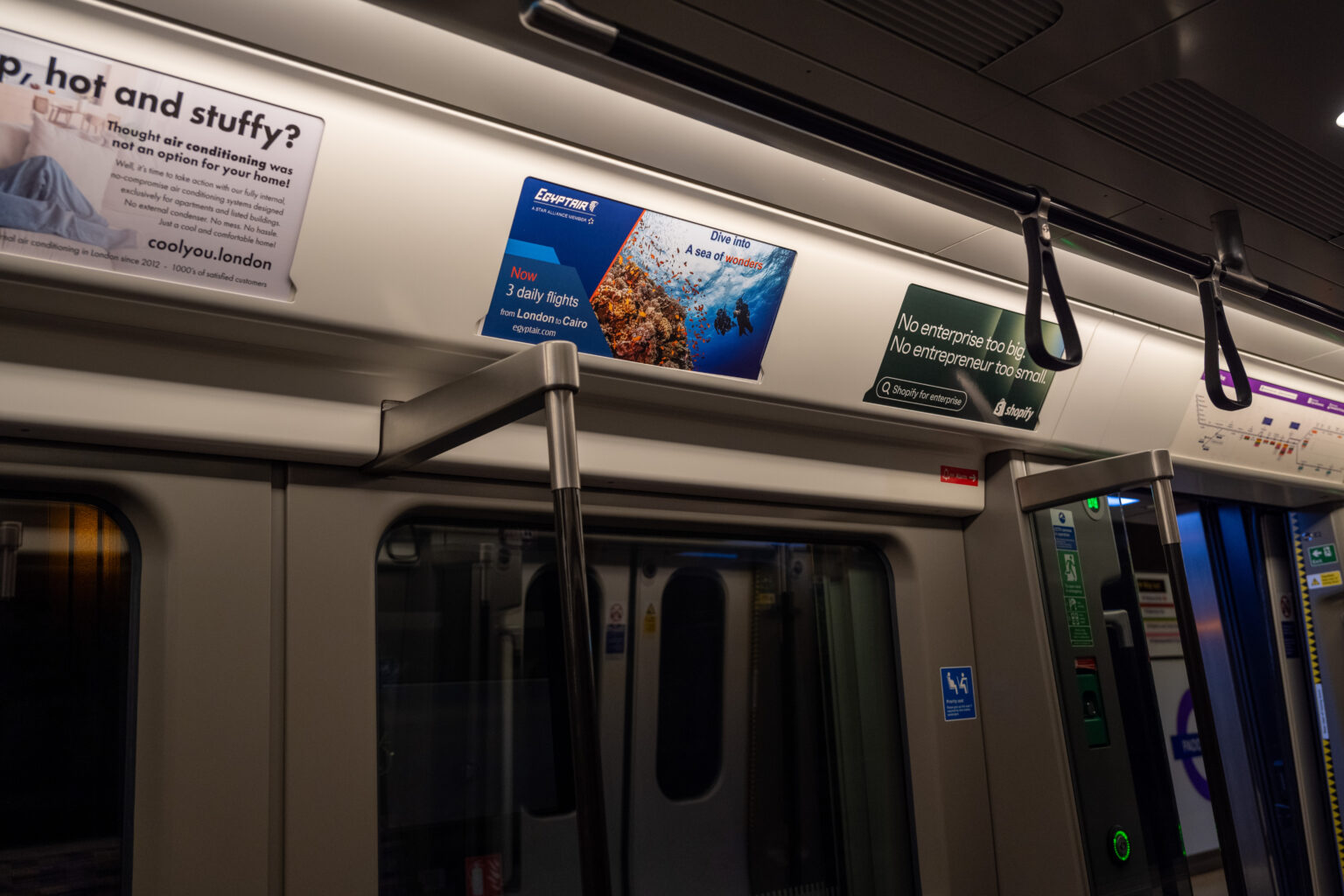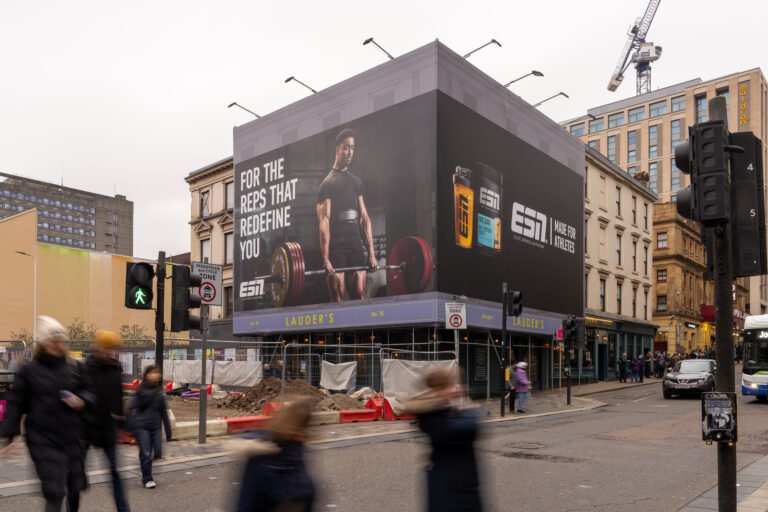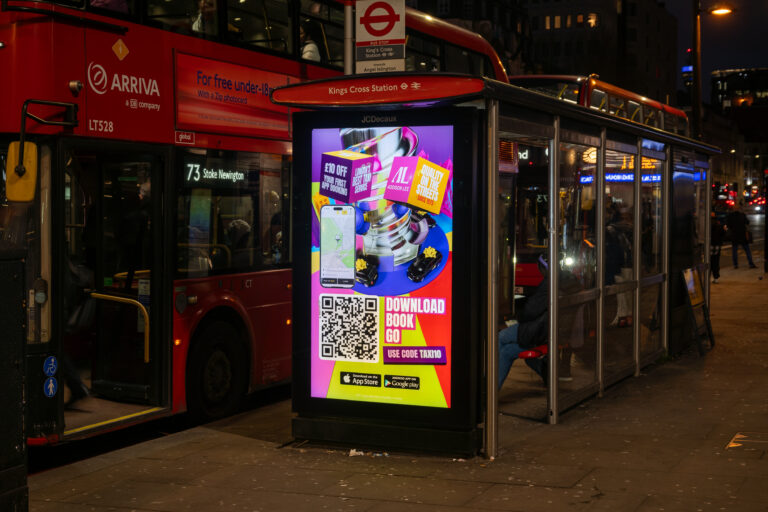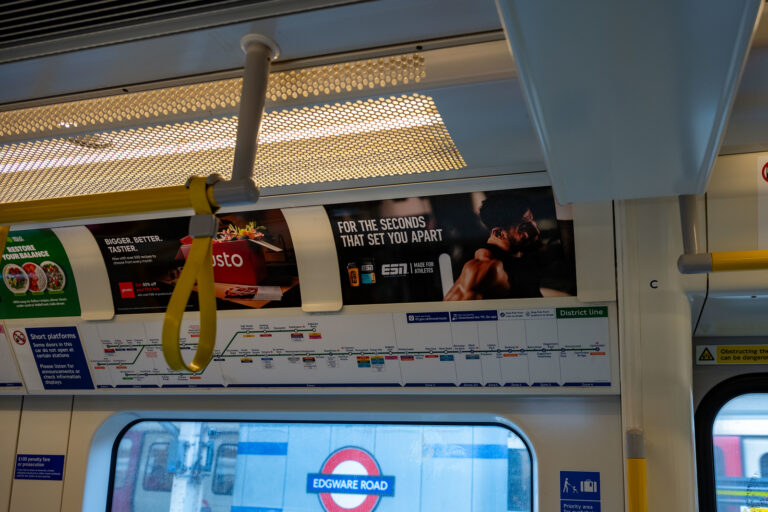"THE TUBE"
The London Underground, affectionately known as “the Tube,” is the world’s oldest underground railway system.
It began operation in 1863 with the Metropolitan Railway, a single line running between Paddington and Farringdon. Over the next century and a half, the network expanded dramatically. Key milestones include the first deep-level electric line in 1890, the introduction of the iconic Underground roundel logo in 1908, and Harry Beck’s revolutionary diagrammatic Tube map in 1933.
Today, the London Underground comprises 11 lines covering 402 km (250 miles) and serving 272 stations, playing a crucial role in London’s transportation infrastructure and cultural identity.
London Underground Advertising Opportunities
London Underground advertising refers to the various forms of promotional content displayed throughout the London Tube network.
This advertising system utilises the extensive reach and high foot traffic of London’s subway system to connect advertisers with a large, diverse audience. Here’s a breakdown of what it entails:
Formats:
- Posters in stations and on platforms
- Digital screens in corridors and on escalators
- In-carriage advertisements (posters inside train cars)
- Station takeovers (where a brand dominates all ad spaces in a station)
- Experiential marketing campaigns in stations
Locations:
- 270+ stations across London
- Platforms, escalators, and corridors
- Inside train carriages
- Entrance and exit areas
Audience:
- Reaches millions of commuters, tourists, and Londoners daily
- Diverse demographic due to the wide coverage of the Tube network
Purpose:
- Brand awareness campaigns
- Product launches
- Public service announcements
- Local business promotions
- Entertainment and event advertising
London Underground advertising offers a unique opportunity for brands to engage with a captive audience in one of the world’s busiest cities, making it a significant part of many marketing strategies targeting the London market.
Cost Of Advertising On The Tube
London Underground advertising costs typically range from £750 to £10,000 per month, though these figures are indicative rather than fixed.
The actual price can vary significantly based on several factors.
Advertising on the Tube is often considered a cost-effective option for brands, particularly when considering the potential reach and impact.
The network’s extensive passenger base provides access to a diverse audience, allowing advertisers to connect with a wide spectrum of potential customers.
One of the key advantages of Tube advertising is the wealth of data available to support media planning and buying decisions. This data-driven approach enables brands to make informed choices about ad placement, timing, and format, enhancing the overall effectiveness of their campaigns.
The Underground’s unique environment offers multiple touchpoints for customer engagement, from platform posters to digital screens in high-traffic areas.
This variety allows brands to tailor their approach based on budget, target audience, and campaign objectives.
Moreover, the captive nature of the Tube audience – with passengers often having time to engage with advertisements while waiting for trains or during their journey – can lead to higher engagement rates compared to some other advertising mediums.
While the initial cost may seem significant, when considering the potential reach and the quality of exposure, many brands find Tube advertising to offer good value for money.
The ability to target specific lines or stations also allows for more localised campaigns, which can be particularly effective for businesses looking to attract customers in specific areas of London.
It’s worth noting that working with specialist media buyers can help brands optimise their spend and achieve the best possible outcomes within their budget constraints.
effectiveness of london underground advertising
London Underground advertising is generally considered highly effective for several reasons:
- Massive reach: The Tube network serves millions of passengers daily, providing advertisers with access to a large and diverse audience. This extensive reach allows brands to generate significant exposure within a relatively short timeframe.
- Captive audience: Unlike many other advertising mediums, the Underground provides a somewhat captive audience. Commuters often have time to engage with advertisements while waiting for trains or during their journey, leading to higher attention and recall rates.
- Repeated exposure: Regular commuters encounter the same advertisements multiple times, reinforcing brand messages and increasing the likelihood of remembering and acting on them.
- Demographic diversity: The Tube serves a wide cross-section of London’s population, from tourists to business professionals, allowing advertisers to reach various target audiences within a single campaign.
- Contextual relevance: Advertisements can be tailored to specific locations or lines, making them more relevant to the local audience. This targeted approach can be particularly effective for location-specific promotions or events.
- Creative opportunities: The Underground offers various advertising formats, from traditional posters to digital screens and even immersive station takeovers. This variety allows for creative and impactful campaigns that can stand out in a crowded advertising landscape.
- Data-driven targeting: Advanced audience data and analytics enable advertisers to optimize their campaigns for maximum effectiveness, ensuring ads reach the right people at the right time.
- Brand association: Advertising on the Tube can lend credibility to brands, associating them with a iconic part of London’s infrastructure.
While effectiveness can vary depending on the specific campaign and execution, many brands report positive results from their Underground advertising efforts.
However, it’s important to note that measuring effectiveness can be challenging, and results may depend on factors such as campaign duration, creative quality, and integration with broader marketing strategies.

